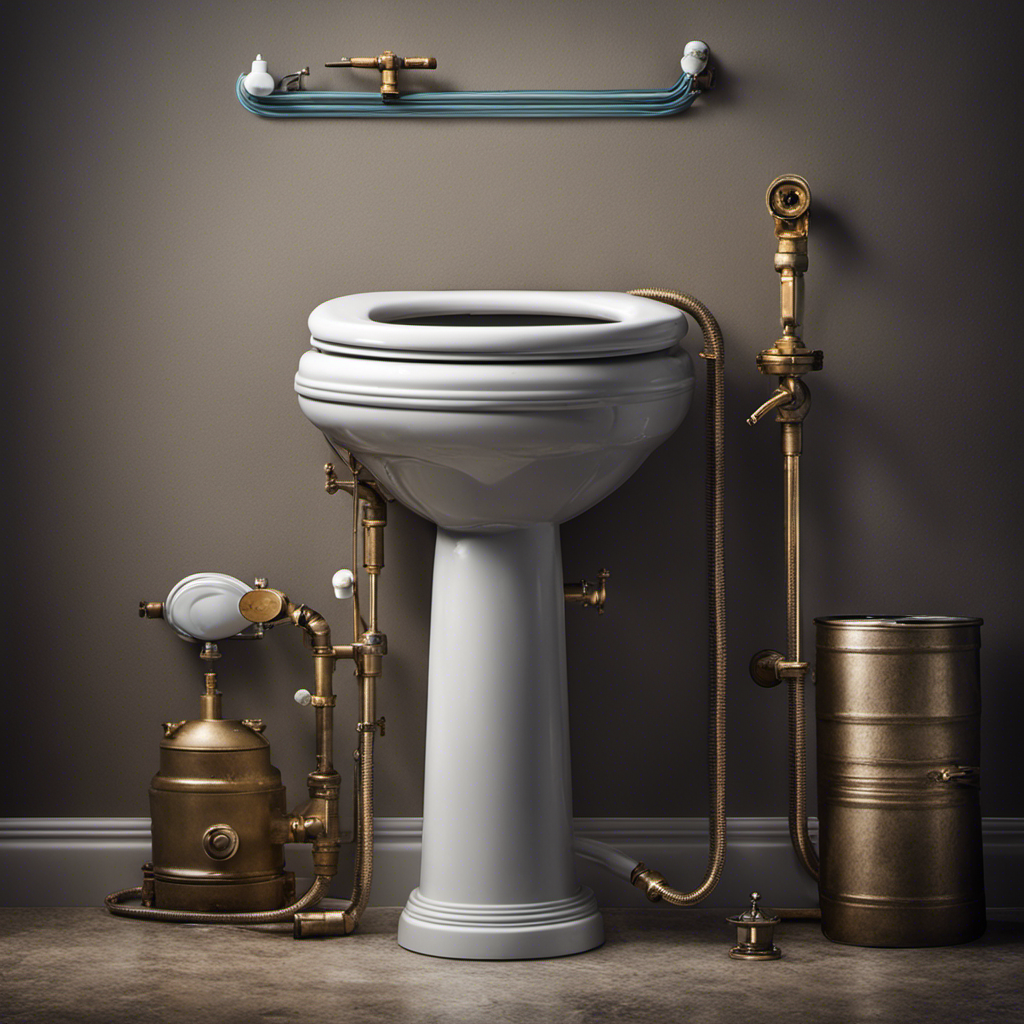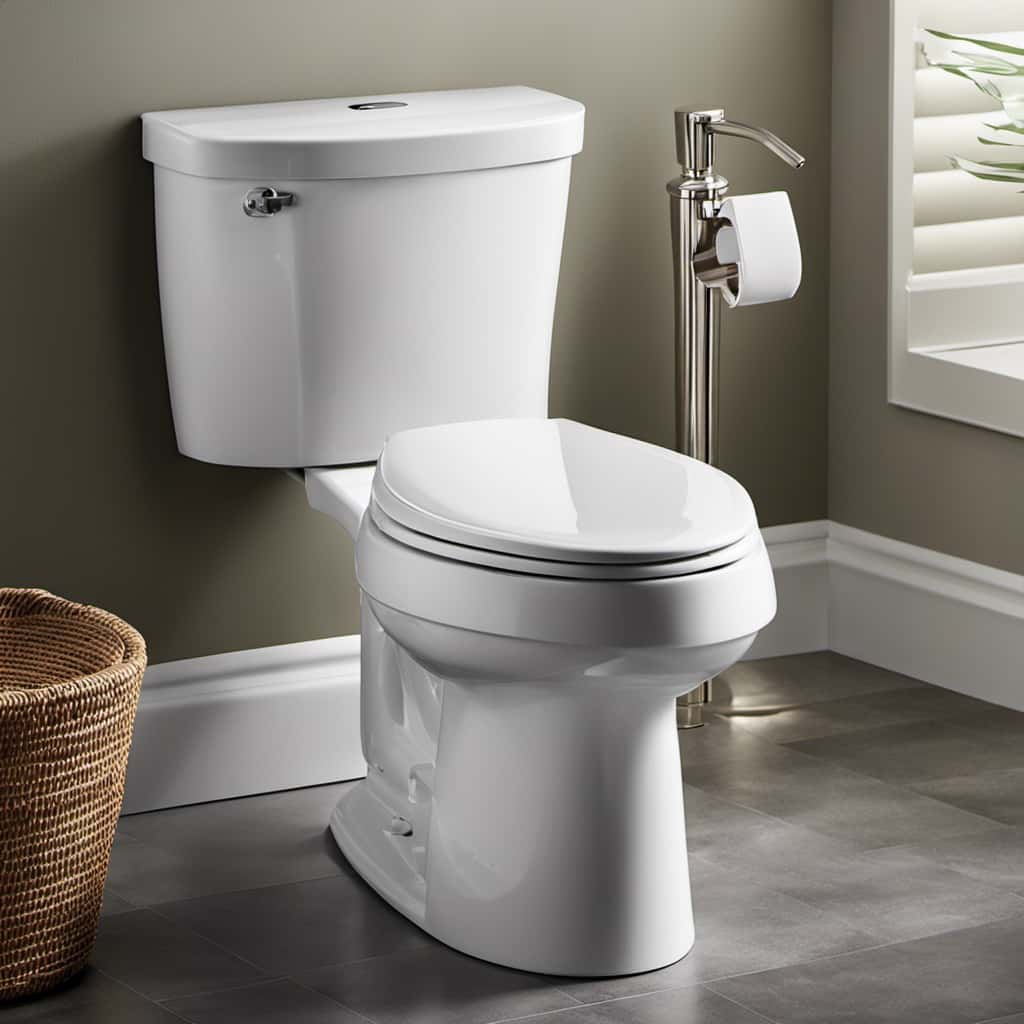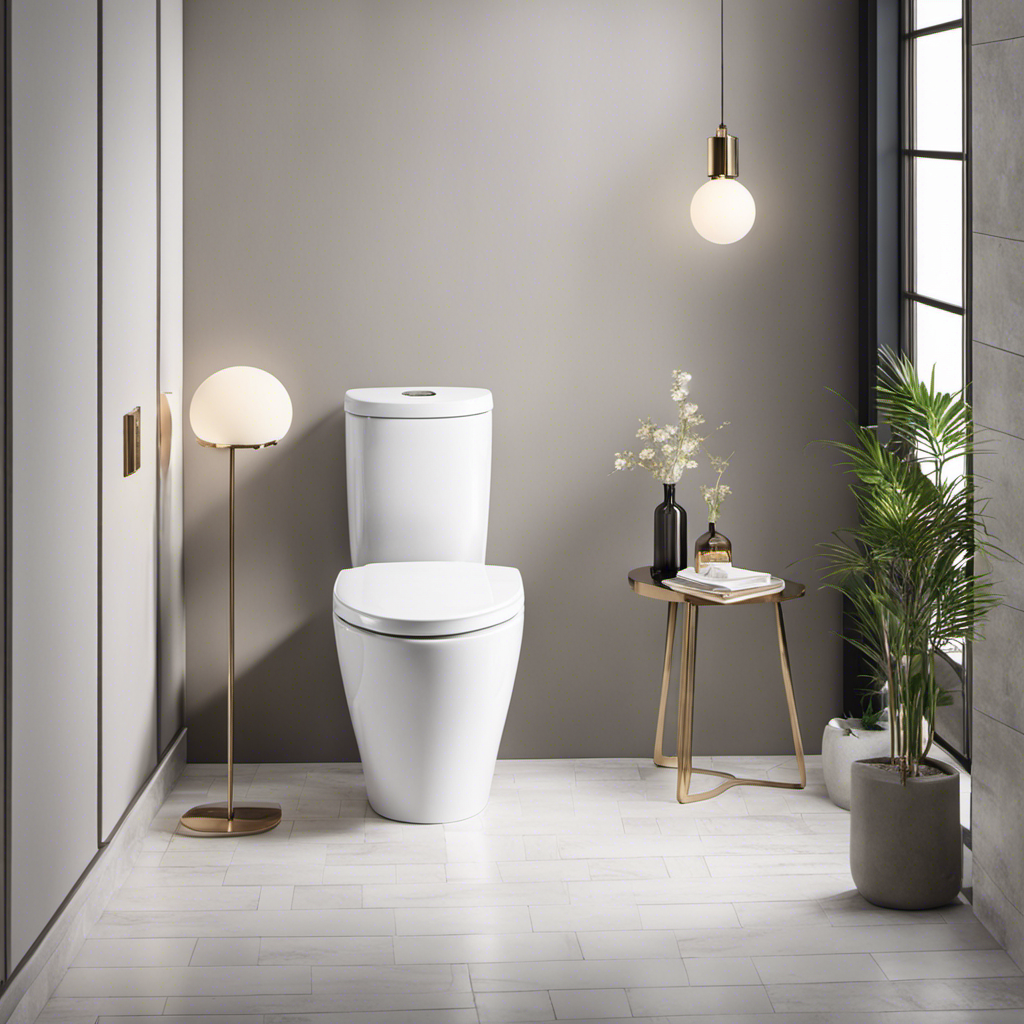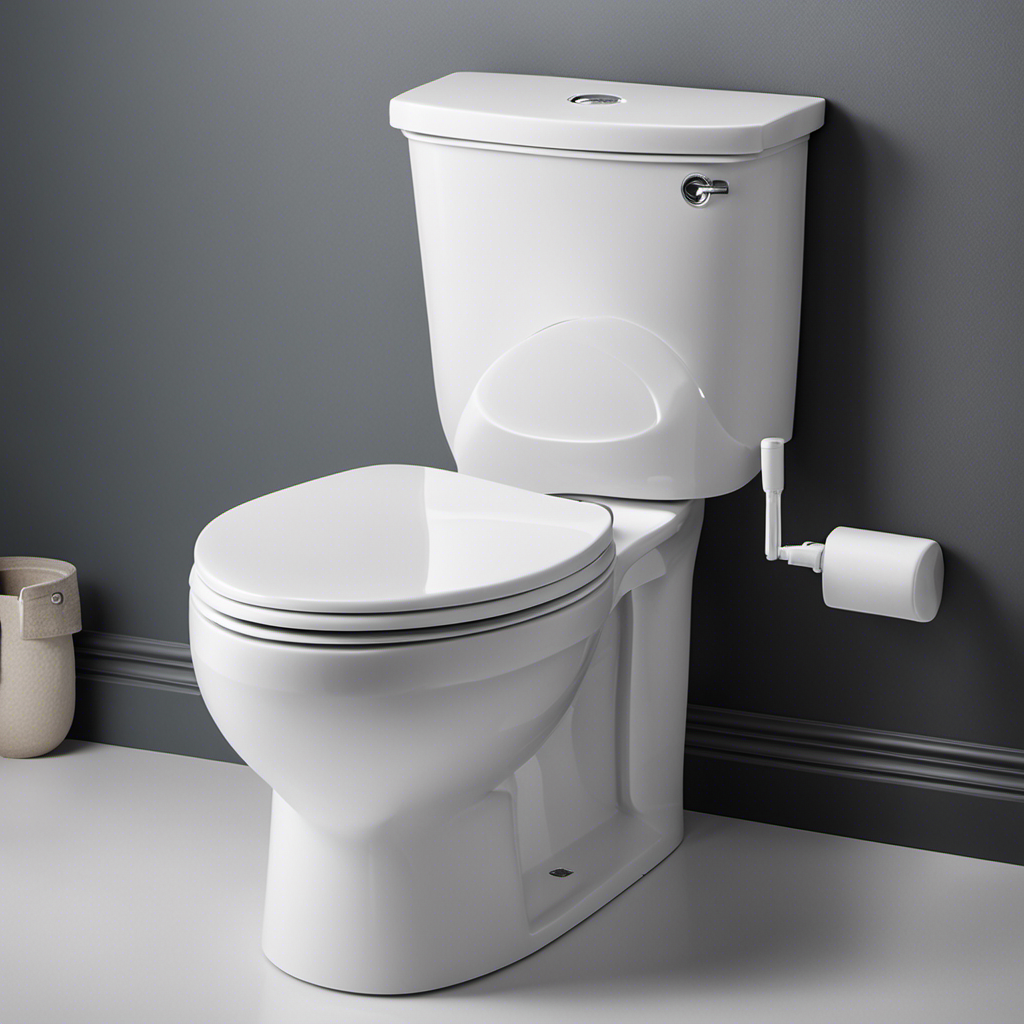Hey there!
Ever had trouble with your toilet tank not filling up properly?
Well, I’ve got some solutions for you.
From issues with the water supply valve to problems with the float ball, hose, fill valve, and even low water pressure, we’ll cover it all.
Don’t worry, it’s not as complicated as it sounds.
With a few simple steps, you’ll have your toilet tank filling up like a champ in no time.
So let’s dive in and get your bathroom back to full functionality!
Key Takeaways
- Water supply valve not fully open can restrict water flow into the tank, causing slow filling issues.
- Waterlogged or cracked float balls can prevent enough water from entering the tank, necessitating replacement.
- Clogged water supply hoses, often due to mineral deposits, can be cleaned or replaced to resolve restricted water flow.
- Clogged fill valves can slow down water flow into the tank, and they should be cleaned or replaced if necessary.
Issues With Water Supply Valve
I need to check if the water supply valve is fully open to ensure proper water flow into the tank.
Water supply valve maintenance is crucial for troubleshooting water supply valve issues. Sometimes, the valve may not be fully open, which restricts the water flow into the tank. This can result in a slow filling tank.
To solve this problem, simply open the valve to the maximum. If the valve is stuck, you can use an adjustable wrench to loosen it. By doing so, you will allow a sufficient amount of water to enter the tank and ensure proper functioning of the toilet.
It is important to regularly check and maintain the water supply valve to prevent any potential issues with water flow.
Problems With Float Ball
Replacing the waterlogged float is the recommended solution for ensuring enough water enters the tank. The float ball, which regulates the water level in the toilet tank, can crack and become waterlogged. When this happens, the float falls quickly, preventing enough water from entering the tank.
To fix this issue, open the tank lid and detach the old float. Then, install a new float ball to ensure proper functioning of the toilet tank. It is important to properly maintain the float ball to avoid waterlogging. Regularly inspect the float ball for cracks or signs of damage, and replace it if necessary.
Clogged Water Supply Hose
Using white vinegar and a toothbrush, I can clean the clogged water supply hose to remove mineral deposits and improve water flow.
The water supply hose transfers water from the main supply line to the toilet tank. Over time, mineral deposits from hard water can accumulate in the hose, causing folds and partial clogs.
To clean the hose, I would first disconnect it from the tank and the supply line. Then, I would scrub the inside of the hose with a toothbrush dipped in white vinegar. The vinegar will dissolve the mineral deposits, allowing for improved water flow.
Once the hose is clean, I can reattach it and ensure a steady water supply to the toilet tank.
This simple maintenance step is essential for troubleshooting water supply issues and maintaining proper toilet tank function.
Clogged Fill Valve
The clogged fill valve can slow down the flow of water into the toilet tank. It is essential to keep the fill valve clean to ensure proper functioning. Here are the steps to address this issue:
-
Cleaning fill valve:
-
Turn off the water supply to the toilet.
-
Flush the toilet to drain the tank completely.
-
Use a wrench to disconnect the water supply line from the fill valve.
-
Remove the fill valve cap and inspect for any debris or mineral buildup.
-
Clean the fill valve thoroughly with white vinegar or a commercial cleaner.
-
Reassemble the fill valve and reconnect the water supply line.
-
Replacing fill valve:
-
Follow the steps above to disconnect the water supply line.
-
Unscrew the fill valve from the bottom of the toilet tank.
-
Install a new fill valve by screwing it into place.
-
Reconnect the water supply line and turn on the water.
Low Water Pressure in Plumbing System
I can increase the water pressure in my plumbing system by installing an electric water pump. An electric water pump is a device that helps to boost the water pressure in the system, ensuring a more efficient flow of water. It is especially useful in situations where there is low water pressure in the building or neighborhood.
However, there are also alternatives to electric water pumps that can be considered. One alternative is a pressure boosting system, which uses a pressure tank and a pressure switch to regulate and increase water pressure. Another alternative is a water pressure regulator, which controls the water pressure coming into the building and ensures a steady and adequate flow. Additionally, a water pressure booster can be used to increase water pressure in specific areas, such as showers or faucets.
While electric water pumps are effective in increasing water pressure, it is important to note that they may not be suitable for all situations. Some neighborhoods may experience power outages, which can affect the functioning of electric water pumps. In such cases, alternative solutions should be explored to ensure consistent water pressure throughout the plumbing system.
Here is a table summarizing the options for increasing water pressure in a plumbing system:
| Solution | Description | Pros |
|---|---|---|
| Electric Water Pump | Boosts water pressure in the plumbing system | Efficient flow of water |
| Pressure Boosting System | Uses a pressure tank and switch to increase water pressure | Steady and regulated water pressure |
| Water Pressure Regulator | Controls water pressure coming into the building | Ensures consistent flow of water |
| Water Pressure Booster | Increases water pressure in specific areas | Targeted solution for low pressure |
Overall, increasing water pressure in a plumbing system can be achieved through various methods, including the installation of an electric water pump or the use of alternative solutions such as pressure boosting systems, water pressure regulators, or water pressure boosters. It is important to consider the specific needs and limitations of the plumbing system before deciding on the most suitable option.
Solutions for Water Supply Valve Problems
By opening the water supply valve to the maximum, the flow of water into the tank can be increased and the slow filling issue can be resolved. Regular maintenance of water supply valves is crucial to avoid such problems.
Signs of a faulty water supply valve include reduced water flow, leaks around the valve, and difficulty in fully opening or closing the valve. To properly maintain the valve, it is important to inspect it regularly for any signs of wear or damage.
Additionally, lubricating the valve with a silicone-based lubricant can help ensure smooth operation. If the valve is stuck, using an adjustable wrench can provide the necessary leverage to open it.
Solutions for Float Ball Issues
Replacing a waterlogged float is the recommended solution for resolving float ball problems. When the float ball becomes waterlogged, it loses its ability to regulate the water level in the toilet tank. This can lead to insufficient water entering the tank, resulting in a weak flush or continuous running of the toilet.
Common causes of waterlogged float balls include cracks in the float cup and mineral deposits from hard water. To replace the waterlogged float, start by opening the tank lid and detaching the old float. Then, install a new float by following the manufacturer’s instructions.
Alternatively, toilet tank float ball alternatives, such as adjustable float valves or electronic water level sensors, can be used. However, it is important to ensure compatibility with the toilet’s flushing mechanism.
Solutions for Clogged Water Supply Hose and Fill Valve
Using white vinegar and scrubbing with a toothbrush can help clean a clogged water supply hose or fill valve. Here are some solutions for these issues:
-
Replacing waterlogged float:
-
Open the tank lid and locate the float ball or float cup.
-
Detach the old float by unscrewing it or removing the clip.
-
Install a new float ball or float cup in its place.
-
Cleaning clogged hose:
-
Turn off the water supply to the toilet.
-
Locate the water supply hose connected to the toilet tank.
-
Scrub the hose with a toothbrush soaked in white vinegar.
-
Rinse the hose thoroughly with clean water.
-
Cleaning clogged fill valve:
-
Turn off the water supply to the toilet.
-
Locate the fill valve inside the toilet tank.
-
Soak a toothbrush in white vinegar and scrub the fill valve.
-
Rinse the fill valve with clean water.
Frequently Asked Questions
How Can I Determine if My Water Supply Valve Is Fully Open or Not?
To determine if my water supply valve is fully open, I can visually inspect the valve and check the position of the handle. If the handle is parallel to the pipe, the valve is fully open.
Can a Stuck Water Supply Valve Be Fixed Without Using an Adjustable Wrench?
A stuck water supply valve can be fixed without an adjustable wrench. An alternative solution is to use pliers or a pipe wrench to loosen the valve. However, caution must be taken to avoid damaging the valve or the plumbing system.
What Are Some Signs That Indicate a Cracked or Waterlogged Float Ball?
Some signs of a cracked or waterlogged float ball include a sinking or uneven water level in the toilet tank. This can lead to insufficient water entering the tank, resulting in slow filling.
Are There Any Alternative Solutions to Replacing a Waterlogged Float Ball?
As for alternative solutions to a waterlogged float ball, repairing options are limited. However, one may try drying the float ball thoroughly and sealing any cracks with waterproof adhesive to prolong its functionality.
Can I Use Any Other Cleaning Agent Instead of White Vinegar to Clean a Clogged Water Supply Hose or Fill Valve?
No, it is not recommended to use any other cleaning agent instead of white vinegar to clean a clogged water supply hose or fill valve. White vinegar is the safest and most effective option for unclogging these components.
Conclusion
In conclusion, dealing with toilet tank filling issues can be frustrating. However, understanding the common culprits can help in finding solutions.
One interesting statistic to note is that a faulty water supply valve is the most common cause of slow tank filling, accounting for 40% of cases. By fully opening the valve, replacing a waterlogged float ball, cleaning or replacing a clogged water supply hose, and addressing a clogged fill valve, most filling issues can be resolved.
However, in cases of low water pressure, installing an electric water pump may be necessary.
Stay proactive in maintaining your toilet tank to ensure it functions properly.










